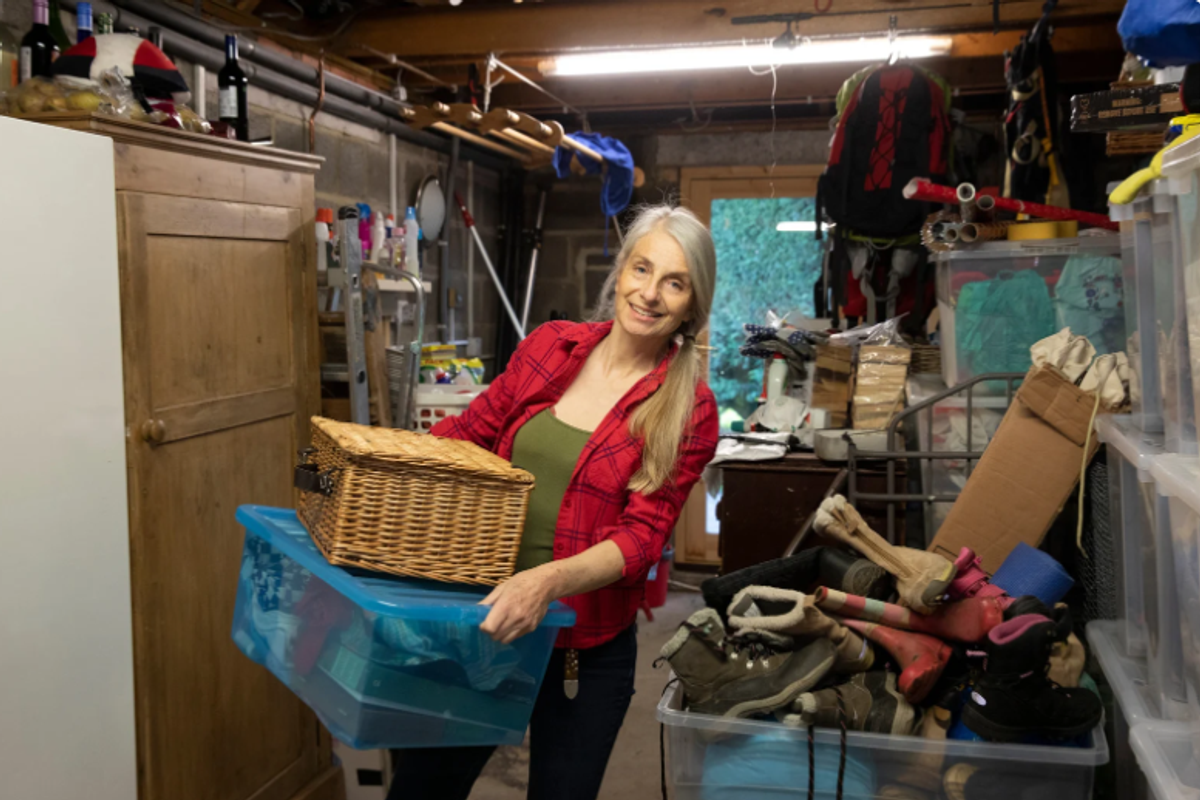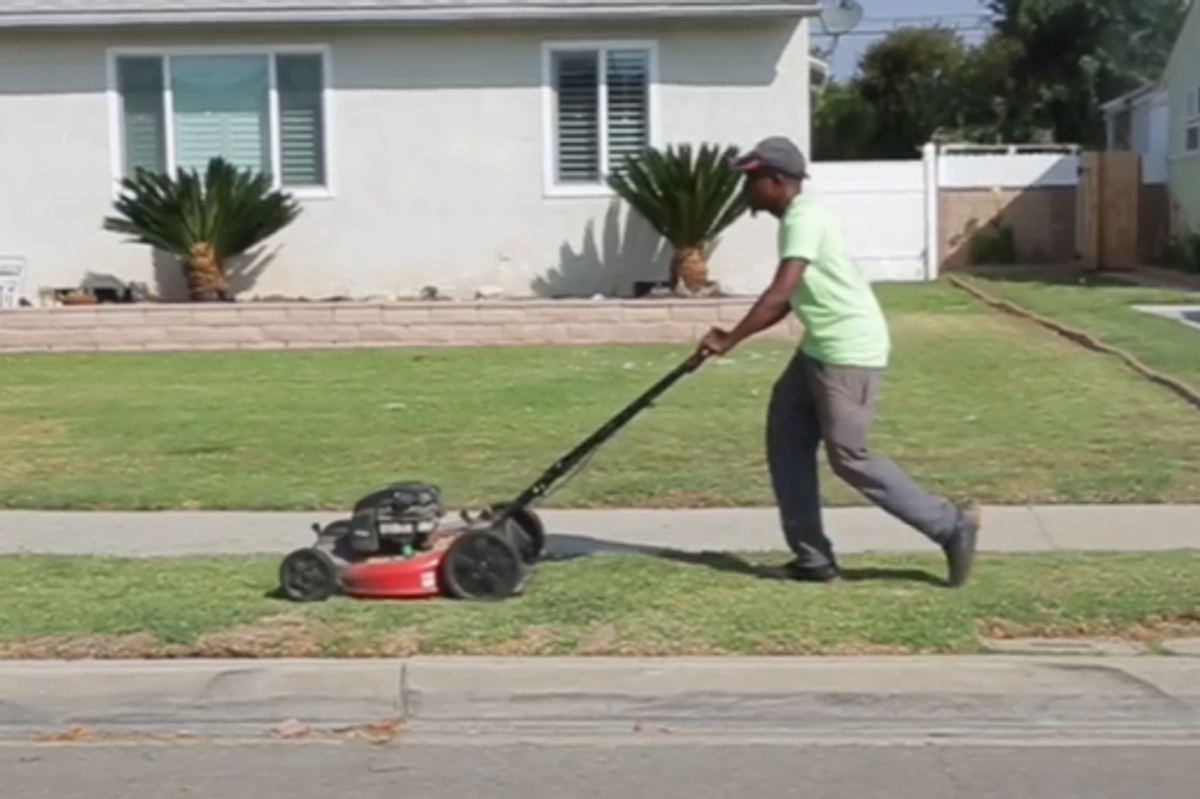In 2001, one company started hiring mostly ex-cons. 14 years later, here's how it's going.
Jamie Paul has seen trouble.
"When you're young, you don't think about the better way, you think about the quick way. And the quick way landed me places I didn't want to be," he said.
Jamie Paul spent more than 10 years in prison. After his release, he found himself in the catch-22 of wanting a legitimate job but unable to get hired. Photo by Jess Blank/Upworthy.
Paul tried earning a living the "quick way." That was after his mother passed away, and he was faced with the burden of supporting his family in Baltimore. But it didn't work. By 2011, Paul had already done three stints in prison — a total of 10 years behind bars.
When he was finally released for the third time, Paul tried hard to go legit. He knew he was a hard worker — a competent worker. Prior to his sentence, he said, he was working and selling drugs at the same time. But like many people with a felony record, he felt trapped — few people would hire him because of his record, which Paul felt was deeply unfair.
"It's not the record that makes the person,” Paul said. "It's the person that makes the person."
But who would give somebody like him another shot? What kind of employer would be willing to trust an ex-con?
In a new series called “Humanity for the Win,” Upworthy visited Second Chance's headquarters with a video camera in November 2015 to find out who was willing to give Paul and dozens of others like him a shot.
Second Chance Inc. is nonprofit deconstruction business in Baltimore. They tear down old houses, save what can be reused, and are employing over 100 people looking for a fresh start after prison in the process.
The work at Second Chance — salvaging old houses — might be the perfect metaphor for the ways the business changes its workers’ lives.
Inside the bright, efficiently run warehouse staffed by dozens of employees getting back on their feet, you’ll find an eclectic collection of every imaginable category of home furnishing, from chandeliers to pianos to a giant, free-standing home bar the size of a gazebo. Working smoothly among the mantelpieces and fixtures, roughly 70% of the workers in Second Chance's deconstruction unit are ex-convicts — and this work is providing a rare path to a new life in this tough part of Baltimore.
“It’s easy to say, ‘They’re lazy, go get a job,’ but go get a job where? Doing what?”
— Ericka Alton
Ericka Alton is a community organizer in the Sandtown-Winchester neighborhood of Baltimore. She's seen everything in this community — including the direct link between economic pressures, lack of opportunity, and crime here.
"People are selling drugs and participating in illegal activity not by choice, but as a means to survive," Alton said.
Poverty and inequality are major challenges in Baltimore — crime and chronic imprisonment are often the result. But what’s the way out?
While Maryland currently sits atop the list of America's richest states, Baltimore remains one of the country's poorest cities. A 2015 CNN report found that almost a quarter of the city's population lives below the poverty line — and black residents suffer a disproportionate share of economic hardship.
The median household income of whites in Baltimore is nearly double that of black residents. As of 2013, 37% of young black Baltimorean men were unemployed, compared to just 10% of young white men.
That cycle produces increasingly tragic results. Baltimore saw a pronounced spike in homicides in 2015, while violent crime remained virtually flat in most major American cities. It was the deadliest year per capita in Baltimore’s history. According to Alton, many of her current and prospective clients are faced with a stark choice: sell drugs and expose themselves to violence and imprisonment, or remain unemployed.
"It’s easy to say, 'They’re lazy, go get a job,' but go get a job where? Doing what?" Alton said.
There aren’t nearly enough job opportunities available, like the ones offered by Second Chance, to help ex-cons transition into a productive life. Photo by Jess Blank/Upworthy.
Second Chance was the brainchild of Mark Foster, who came up with the idea when he realized how difficult it was to find materials for an old house he was rebuilding. Perhaps, he thought, there was a way to reclaim perfectly good, historically interesting architectural elements — the floors, fireplaces, light fixtures, and furniture that typically get junked when old homes are destroyed — and offer marginalized people a path back to society by hiring them to help scout and collect those materials.
"The biggest stereotype is that because we have been convicted that we can't be trustworthy or dependable workers, which is not true."
— Jamie Paul
The organization accepts donations of individual pieces (and sets) of furniture, as well as old doors, bathroom fixtures, and even vehicles from the general public. Entire houses are also on Second Chance's wish list (and donating one allows the giver to receive a tax deduction instead of a large bill for a teardown service).
When Upworthy met up with the Second Chance crew, a deconstruction team was busy tearing down a house in Arlington, Virginia.
"The good thing about salvage is: It's unique. It's old-school. It's fun. It's things that people tend to just brush off."
That’s what Antonio Johnson, a sales manager at Second Chance, said during our visit.
Among the haul were two toilets, a lamp fixture, an air conditioner, a refrigerator, and a dishwasher. The team ripped up dozens of floorboards and struck an old fireplace mantel, loaded it onto the truck, then shipped it back to the warehouse, where it was put on sale for $175.
Sales manager Antonio Johnson with the fireplace mantel unloaded from the Arlington house. Photo by Jess Blank/Upworthy.
Johnson, like much of Second Chance's workforce, spent time in prison. He started as a warehouse worker and has been promoted several times during his tenure at Second Chance. Johnson’s doing well — but his ability to succeed has been something that people with a record rarely get a chance to prove.
Photo by Francois Nascimbeni/Getty Images.
Jamie Paul, who’s newer to Second Chance, believes his convictions made it harder for him to get hired. According to the data, he's not wrong.
A National Institute of Justice study found that 60-75% of former prisoners were unable to find work within a year of release.
"The biggest stereotype is that because we have been convicted that we can't be trustworthy or dependable workers, which is not true," he said.
But also, former convicts who try to work again after years in prison often find their skills outdated or obsolete.
"Keeping up, especially for people who have been away from technology for perhaps several decades, is really a challenge," said Scott Decker, a foundation professor of criminology and criminal justice at Arizona State University.
A Second Chance deconstruction crew member marks a batch of floorboards with a date and location. Photo by Jess Blank/Upworthy.
Decker has interviewed 600 current and former gang members around the country and found a shocking gap in their skills upon release and the current job market.
"I interviewed a woman in her mid-30s in L.A. who had been in prison for 14 or 15 years," Decker said. "She didn’t know how to use word processing, she’d never sent an email, and she said: 'Mister, how am I supposed to apply for a job? I don’t even know how to use a computer. I have no idea how to do a resume other than to get a typewriter.'"
The catch-22: When former prisoners find themselves jobless, they often go on to commit more crimes.
A 2012 study of former Indiana inmates found that unemployment was one of the three factors that correlated most closely with whether a released felon would re-offend.
A job at Second Chance allows an ex-offender a way out of that cycle.
"It has helped me tremendously — financially, not being stressed, or thinking things that I know I shouldn't do, but I might need to do because I have a wife, a son, a baby on the way," Paul said.
A Second Chance crew unloads salvaged items from the Arlington house. Photo by Jess Blank/Upworthy.
After a 16- to 20-week training that aims to provide those who enter the program with concrete, transferrable skills, prospective employees are guaranteed a job. Some are able to leverage the training into jobs elsewhere, and the rest — along with those who prefer to stay — are hired by the organization.
"We have a guy who talks about just being proud of being able to go home and having his kid see him in his work clothes," said Pete Theodore, one of the permanent Second Chance management staff.
Most deconstruction workers stay with the company for about a year, he said. After that, the hope is that Second Chance employees can use their new skills and certifications to launch new careers.
"In some senses, I feel like a drop in the bucket compared to the need," Theodore said. "But when you look at a real life, and a real person, and a real story of change and hope, it makes it all worth it."
Second Chance is based in Baltimore but hopes to expand to Washington, D.C., and Philadelphia in the coming years. Photo by Jess Blank/Upworthy.
But the path forward is not always simple or straightforward.
A month after Upworthy visited Second Chance, Paul was arrested and charged with misdemeanor assault.
"We are accustomed to some setbacks on the road to wholeness — especially given the population we serve," Theodore said.
But Paul remains on the job. Theodore said he was "saddened" by the news, and that Second Chance remains committed to assisting Paul in his career and skill development.
Jaime Paul recently faced a new criminal charge, but the team at Second Chance remains committed to working with him to build a better future. Photo by Jess Blank/Upworthy.
"In the long run, this is just a stepping stone to get you out into this world," Johnson said.
Of all the skills gained at Second Chance, confidence is perhaps the most important.
Although his recent arrest may make the road forward bumpier, Paul still hopes to own and operate his own contracting company one day.
"If you can tear something down,” he said, “you should know how to put it back up,"
Watch the video of Upworthy's visit to Second Chance below:







 Once you read these, you'll want to throw a headbutt or two.
Once you read these, you'll want to throw a headbutt or two.